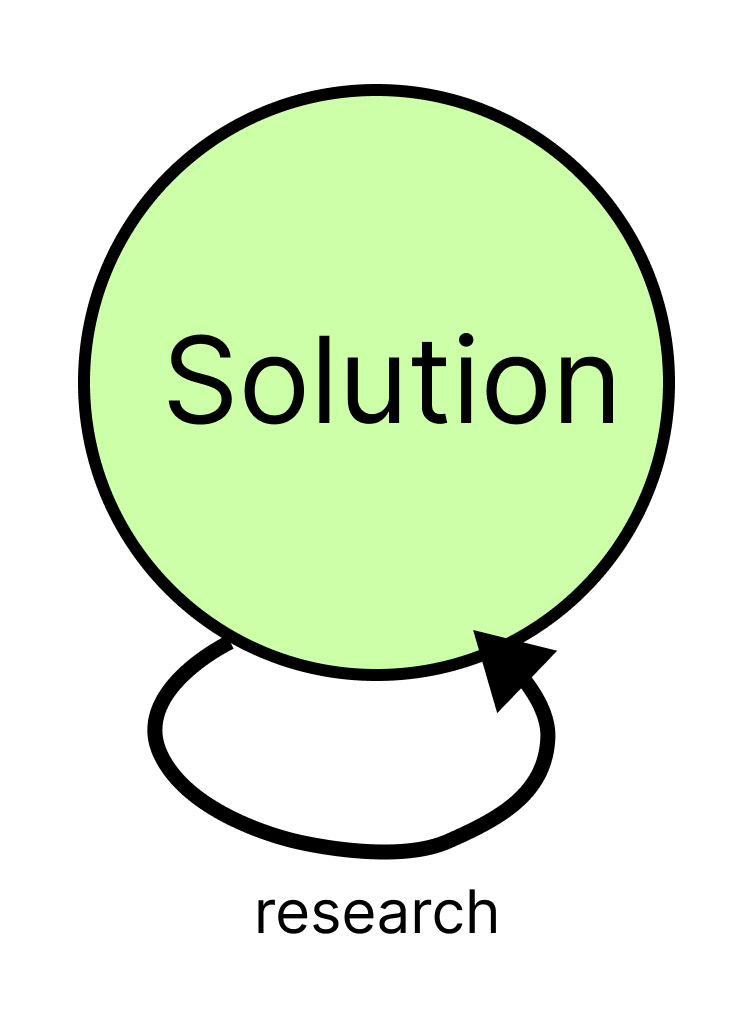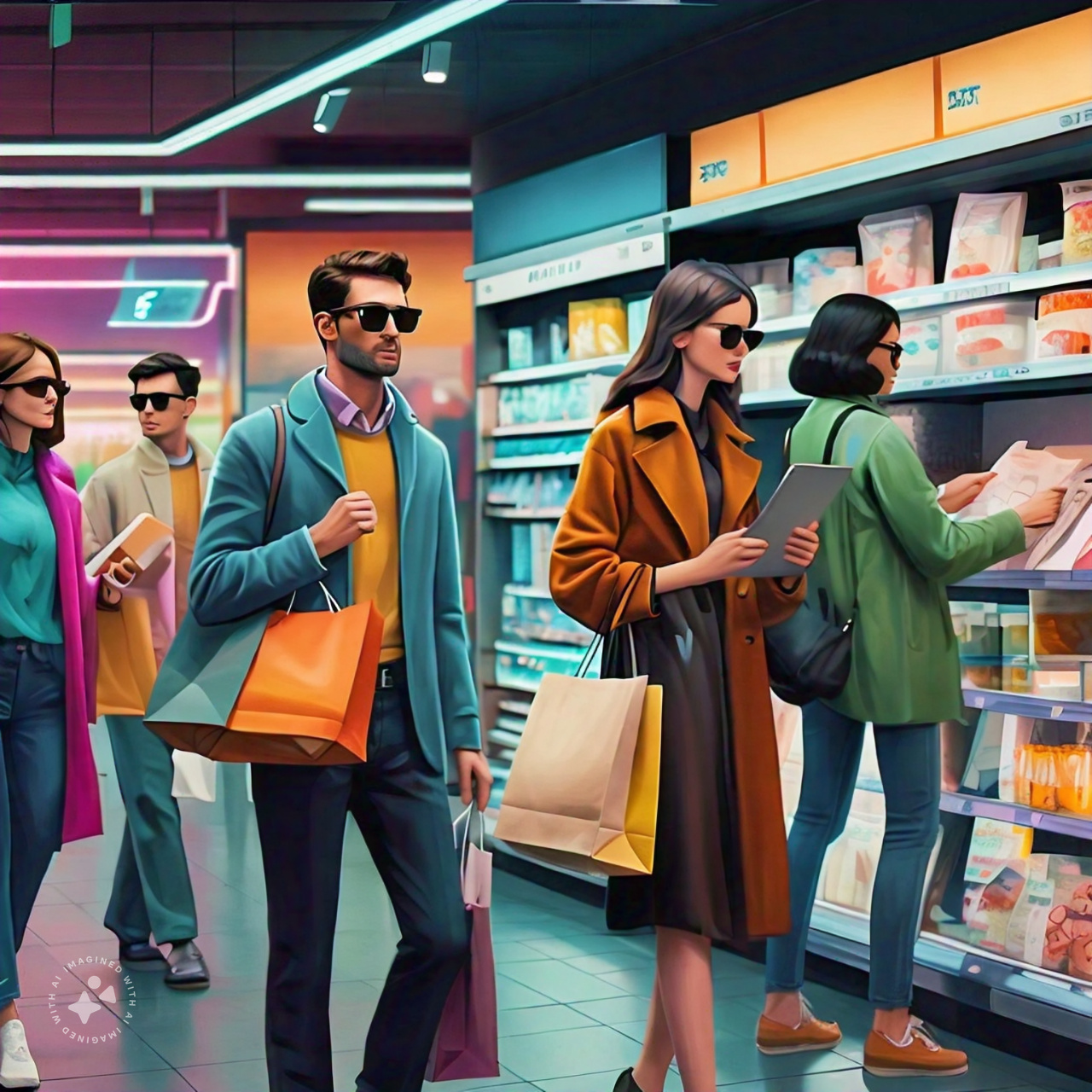I will give you a 2 step explanation to build products, and you can start applying this mindset today. The two steps are Imagining (Gain an understanding of how products are thought) and Building (Gain an understanding of how products are developed).
You can consider these advanced concepts, having been arrived at after much exploration. This is a promising read for New Professionals, and a nice new perspective for Product Officers.
Gain an understanding of how products are thought
Forming an objective design
The initial idea can be a dream, ideas are inherently based on half-baked knowledge; what you need is an initial wireframe which organizes this knowledge and resembles your idea.
Though you may go with intuition, it is always good to develop skills while not succeeding.
Skills:
- Ideation: Ideation is based on momentarily occurring thoughts. You have to put aside creative time where you feel undisturbed to convert these thoughts into insights. You are not just undisturbed but also in flow. Flow is the time when you joyfully attempt an exercise.
- Focusing: Focusing is the ability to identify understanding and apply it across the work at hand. Though ideation may occur alone, focusing never works outside the watch of others.
- Designing: Designing is the way you expect others to follow your thoughts. It’s the height of creative endeavor. When done without keeping the user in mind, it is bound to fail. You can master this skill by constant practice.
It’s your mind showcasing a wireframe for your imagination. This would require a highly skilled wireframer to represent what is needed. The other way to start is by copying someone else’s design. You can go over to Dribble, Behance, and judge the design which you could use. Designers on such platforms are experts, and finding a fitting wireframe is just a matter of spending time looking at these designs.
What you as a reader must believe is that this is far from the actual design your software will have. Most people jump into developing an app after a wireframe and design are done. This is completely wasteful, and doesn’t give any advantage to you as an entrepreneur competing with already successful products.
An objective design comes from great exploration, which may include research. You have to be willing to put effort into learning the ins and outs of the logic established about your app domain. For example, productivity apps. Here you will spend innumerable time periods gauging how other solutions work. Research, whether formal or informal, is a huge enhancement to your thinking, but research is not the way to structure your app design.
Many folks make the mistake of considering research as a groundwork to design software. That is why they fail. Even though it’s more effort put into designing your app than the mere intuition-driven founder, it is greatly flawed. We are still discussing how to think of a product and not how to develop it. Research is merely an aid to your thinking, and not the core material through which users will succeed in behaviorally adopting your product.
Gaining mastery of product topics
A product is a painstakingly hard commitment. You got started with the objective design. Learn enough to create a competitive knowledge framework. Nurture a personal perspective.
Though you may go with intuition, it is always good to develop skills while not succeeding.
Skills:
- Weaving: Weaving is the art of connecting the dispersed. Others’ knowledge is not directly applicable to your mindset, objectives, or unique situation. The interplay of observation and your intuition will lead you to understand what you intend to learn.
- Articulation: Articulation is the interplay of language, culture, and your caliber. It is always advised to do something meant for you to excel in. Doing it in a language you own, a culture you love, and a field you yearn for is far more rewarding to the soul, than done for money.
- Creativity: Creativity is not a skill, it’s a desire in my language. Creativity requires lived experiences. The more you live differently from regular tradition, the more lived experiences you will have. But creativity will only be complete when expressed.
The logic is fine and a breakthrough achievement. The requirement now is to go deep in understanding the literature and implementation about your app domain. If you are making a productivity app, you need to understand the literature on productivity. You need to be productive yourself to understand the application of the literature.
Though you may suppose understanding is enough to move to developing a product, you couldn’t be more wrong. Understanding is a perspective that can’t be shared or talked about. You cannot use it to talk to customers, and you can’t use it to talk to employees. There needs to be an element of knowledge to your understanding. This will come as your own literature and attempt to write what you understand.
You will quickly find that your understanding is not good enough to be a representative of the skills you possess. You might be able to convince others you know something, but not be able to teach them. You will not be able to leave a memory in them of how well you understood something. This is because understanding in itself is not enough to be applied to different situations people are in.
You might have made it useful for yourself, but others cannot possibly understand it through you or your thinking. There is a gap in how efficient you are in sharing your understanding. There’s no loss in knowing this. What you need is a personal perspective of talking about the knowledge. You need to decipher a new way of talking about the knowledge of your domain. This is because people will be receptive to a new way of saying things, not about something they can already hear from others.
The crucial next step is to understand others and what situations they are in, which we will discuss in product building.
Infusing strategy in product
This is a great point of no return. Now you are ready to triple down. Run ahead of the market. It’s time to innovate. Imagine the present solutions. See what new will mean.
Skills:
- Clarity: Clarity comes over time, and vacancy of the mind. Spending time consuming a course, movie, or social media gives your mind time to make objectives. You can tailor your consumption to affect the objective. Creation; dabbling in work, writing, painting, or exercising boosts your mind, which starts running towards your objective.
- Predicting: Predicting is knowing what is coming next. A lot depends on your ability to predict. Essentially what is called creating money. If you know what comes next, you can win the world. The bit I know is, there is dogged effort involved in the ability to predict. It is more than knowledge, and more subconscious.
The last step in thinking about what you will make is predicting what the future of your domain will look like. This can be a nicely defined goal or a feature that will change everything about your product domain, a feature that will force everybody to step up their game. But it needs to be a realistic one; all the effort put in the above steps will only be a return on investment if you can do this last one.
It means that the world will change according to you in some manner, and what will be needed then will be your feature, or goal. This is best thought of as an integration of different capabilities which today exist sporadically. What will the future customer need to think about, how that will lead to change in the communication they usually do, how that communication will affect the job the customer is attempting to gain an advantage in from your solution.
With this new capability in existence, variability will be introduced where those who can take advantage will excel in life better. Everybody who is deliberate will identify the new opportunities that will emerge, and those attentive will be able to take action through your device’s capability. This period will see vendors starting to copy what you make, and the availability of this new capability will democratize.
This capability is so profound that the industry will transform in pursuit of it. New ideas will emerge, and the world would move forward into a new scope of fulfillment. This doesn’t have to be something that finds popularity in the consumer space; it can be something relevant in the business space. With this, you are ready to start building your product.
Gain an understanding of how products are developed

These are not stepwise functions; they exist together to be frequented when needed. They are connected though.
Understanding your audience of one / Understanding the Ideal User (Draft)
Wrong Approach though sensible, and a bit illuminating
Your product will cater to a wide audience, and that is necessary to build something that will give opportunistic return so that not just you, your investors, shareholders, and employees can be happy. But, currently, you just need some users, of some type. All your effort should be in understanding them and what they will generally share with your bigger audience. If you need to select someone, take your time in identifying them.
This is tricky because I have seen startups fail through this approach. This is because they stop building a product suitable for a general audience by neglecting that your audience of one also has traits that your general audience would not have.
You have to build keeping in mind the most valuable items an audience will want, and not everything someone wants. If you want to be innovative, you may even be excessively picky, as you will build something that is extremely painful for the audience yet has enough interoperability with other jobs in the process to be considered useful.
Right Approach
The idea is, an ideal user is a future user. They are not present today. There are many people who can be partly that future customer and hence use your product in their ways. But the challenges of the times will resound in your product and slowly customers would use more of your features. This doesn’t mean you will build a feature frenzy. You will still slowly build the product in incremental identification of user needs. Yet, once that becomes too dispersed and everything needed has been built, you will build for the future user with a great deal of preoccupation with future needs, an extension of the present needs.
You will only build as you see traction in the use of these features even though from fewer users. And you will adjust the features in an attempt to make them suitable for more users. While you will not stop your preoccupation with being influenced by the future user who is also changing as you develop the product.
AI: The ideal user is a future user who will experience positive behavior changes due to your product. Focus on incremental identification of user needs.
Notes
Can McD’s Ronald McDonald be called an audience of one, where it can be said he lives in each eater (in case you bring your child) of McD?
Skills:
- Gathering Requirements: This is a great skill to develop; many will not understand it deeply, and you will have an edge on them. There are thousands of new developers you can beat. But you can go one step further, beat anyone. The requirements you note will decide how good solution can be. In times of uncertainty, these requirements are ecstasy. They will give you the basis of certainty and inform all your actions every time. Whatever you may have done or not; you should always be able to go back to your requirements and adjust in the face of risk (eg. technological change, competitors, regulatory pressure, falling activity)
- Determining Behavior
- Producing Behavior
Iterative development through new customers (Draft)
This is not simple to explain. You have to start making the software for a few people and recover the application of your hard-earned learnings. Your learnings mixed with adoption (demand in a way) are going to define the trajectory of your software. With software, there is no fixed destination; a vision can help you make decisions, but be ready to revise its meaning in situations where decisions become bad.
The problem that sometimes happens is that there is no vision after successful learnings from what worked (not what failed). But you can’t build something without a vision. So take your time to re-establish the vision, while proceeding in the development of bets.
Remove the solution from the table in parts or whole if you can’t envision a future because a solution without a vision is not an asset but a downward spiral.
Skills:
- Matching Vision and Learnings
- Rapid Prototyping
- Rapid Testing
Incorporating for complexity of diversity (Draft)
The world is colorful, with all shades and all sets in existence. The design has to be strategic such that these sets are able to realize their goals.
How are people different? You are building for an audience of one, but how will you incorporate diversity?
We will not try to assume our audience of one is of a particular race, nation, religion, gender, particularly able, or particularly the same. We will assume that they have a problem that resonates with all the audience.
It might not even be the same problem exactly, but may have different flavors.
Here we will leave the notion of the audience of one. We will let go of the definition of our problem. We will understand the problem from the facets it is drowned in for multiple different people.
Though we are doing iterative development, we need a second process, one that is injected into a growing reality, a part of vision that is articulated.
Skills:
- Understanding the Problem
- Creating Blueprint - from Creating Constraints - from identifying issues in group use
- Structure through Vision

